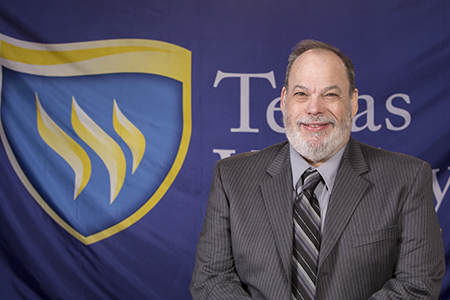Identification of a protein phosphatase 2A family member that regulates cell cycle progression in Trypanosoma brucei. Rothberg KG, Jetton N, Hubbard JG, Powell DA, Pandarinath V, Ruben L. Mole Biochem Parisitol. 2014 Mar-Apr; 194 (1-2).
The cell cycle as a therapeutic target against Trypanosoma brucei: Hesperadin inhibits Aurora kinase-1 and blocks mitotic progression in bloodstream forms. Jetton N, Rothberg KG, Hubbard JG, Wise J, Li Y, Ball HL, Ruben L. Mol Microbiol. 2009 Apr;72(2):442-58.
The RACK1 signal anchor protein from Trypanosoma brucei associates with eukaryotic elongation factor 1A: a role for translational control in cytokinesis. Regmi S, Rothberg KG, Hubbard JG, Ruben L. Mol Microbiol. 2008 Nov;70(3):724-45.
Overexpression of glutamate-cysteine ligase extends life span in Drosophila melanogaster. Orr WC, Radyuk SN, Prabhudesai L, Toroser D, Benes JJ, Luchak JM, Mockett RJ, Rebrin I, Hubbard JG, Sohal RS. J Biol Chem. 2005 Nov 11;280(45):37331-8.
Recombinant T Cell receptor molecules can prevent and reverse experimental autoimmune encephalomyelitis: dose effects and involvement of both CD4 and CD8 T cells. KumarV, Over B, Hubbard G, Sercarz E, Wartd ES. J Immunology 1997 Mar(159): 5150-5156.
Abnormally short serum half-lives of IgG in beta 2-microglobulin-deficient mice. Ghetie V, Hubbard JG, Kim JK, Tsen MF, Lee Y, Ward ES. Eur. J. Immunol. 1996 Mar: 26(3):690-6.
The stoichiometry and affinity of the interaction of murine Fc fragments with the MHC class I-related receptor, FcRn. Popov S, Hubbard JG, Kim J, Ober B, Ghetie V, Ward ES. Mol Immunol. 1996 Apr;33(6):521-30.
The dysfunction of coagulation factor VII Padua results from substitution of arginine-304 by glutamine. James HL, Girolami A, Hubbard JG, Kumar A, Fair DS. Biochem. Biophys. Acta. 1993 Mar 20:1172(3):301-5.
Molecular defect in coagulation factor X Friuli results from a substitution of serine for proline at position 343. James HL, Girolami A, Hubbard JG, Fair DS. Blood 1991 Jan 15: 77(2):317-23.
Isolation and characterization of the factor X Friuli variant. Fair DS, Revak DJ, Hubbard JG, Girolami A. Blood. 1989 Jun;73(8):2108-16.
Primary and Bacterial Secondary Production in a Southwestern Reservoir. Chrzanowski TH, Hubbard JG. Appl Environ Microbiol. 1988 Mar;54(3):661-669.
Impact of storms on heterotrophic activity of epilimnetic bacteria in a southwestern reservoir. Hubbard JG, Chrzanowski TH. Appl Environ Microbiol. 1986 Jun;51(6):1259-63.
Applicability of the fluorescein diacetate method of detecting active bacteria in freshwater. Chrzanowski TH, Crotty RD, Hubbard JG, Welch RP. Microbial Ecology 1984 June;10(2):179-85.








